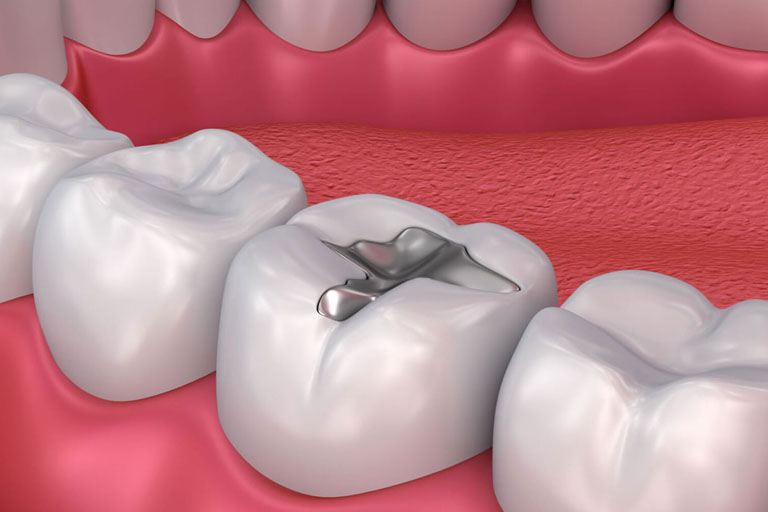Dental Fillings

Dental Fillings
When a tooth develops a small hole or cavity, a filling is a common treatment option. The procedure involves the removal of the decayed tooth tissue by a dentist, followed by filling the space with a filling material. It is a way to repair the tooth and prevent further damage.
When sugars and starches from food and drinks are met with decay-causing bacteria, they create an acid that attacks the enamel on a tooth’s surface.This can result in the loss of minerals, causing a white spot to appear, which is an early sign of tooth decay. If not addressed, repeated exposure to acid can lead to the enamel losing more minerals, which can be restored by fluoride from toothpaste or a dental professional. However, if the enamel continues to lose more minerals than can be restored, it can weaken and result in a cavity. Severe tooth decay can cause significant damage to the tooth, including complete destruction, pain, infection, and tooth loss if left untreated.
While prevention is ideal, cavities can be remedied by various types of filling materials such as tooth-coloured composite and silver-coloured amalgam fillings. Composite resin fillings are becoming more popular due to their aesthetic appeal and advancements in their formulation. Additionally, severely damaged teeth can be treated with crowns made of metals like gold, porcelain, or stainless steel (for milk teeth). However, both fillings and crowns have a limited lifespan and may eventually require replacement.
If you experience sensitivity to hot, cold, or sugary food or drinks, an ache around a tooth, pain when biting down, a visible hole on a tooth, or discoloured staining in black, brown, or white, it may indicate that you have tooth decay.
